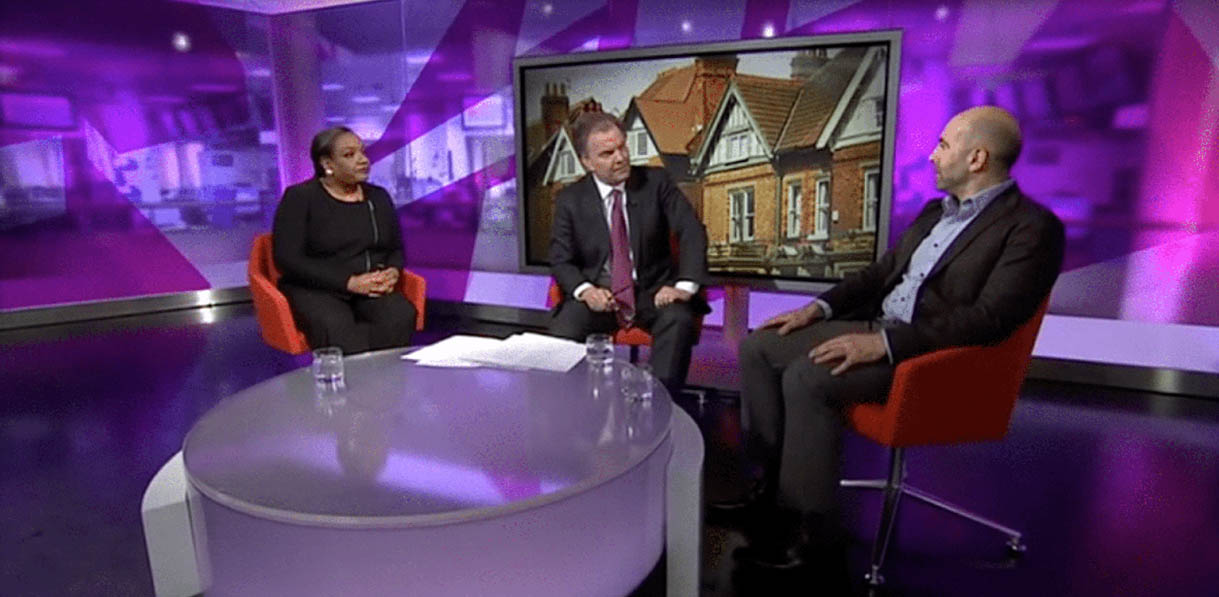Big changes are afoot with buy to let lending that will make it increasingly difficult to get a loan. If like me, you refinance several loans a year as discounted products come to an end, then you need to take a long hard look at the changes and start planning, particularly if you were hoping to raise more money.
Prudential Regulation Authority (PRA) rules governing buy to let lending came into effect on 1 January 2017. Over the past 2 years most lenders have started stress testing applications at 125% rental coverage and a notional mortgage rate of 5%, lately increasing to 5.5%. This means that even if the lender offers you a mortgage rate of 2%, the rent will have to cover 125% of the mortgage payment as if you were paying a mortgage rate of 5.5%. PRA regulation has now made the stress test of 125% at 5.5% compulsory and suggested that lenders must also take into account the additional costs that landlords will incur from forthcoming tax changes. So most lenders have increased their stress test to 145% at 5.5%. Not only that, we are seeing a panoply of complex criteria. For example BM Solutions applies a stress test 125% at 5.5% for basic rate taxpayers, but increases this to 145% at 5.5% for higher rate tax payers. Many lenders are applying the lower criteria for straight remortgages and the higher criteria for remortgages with capital raising. 5 year fixes are exempt and lenders can apply a lower stress test, for example Virgin Money applies 145% at its standard variable rate of 4.74%. This means that applicants can generally borrow more on a five year fix. Of course the irony is landlords will be forced into more expensive long term fixes, increasing finance costs that can no longer be set against tax.
Broker Simon Allen from Searchlight Finance who runs offices in Cheshire and London says that “the aim is to get buy to let lending levels down.” He explained that where previously landlords with a 5% rental yield could get an 80% loan to value (LTV) mortgage, they are now looking at LTVs of 63%. A 4% rental yield could get you 64% with previous criteria, now it will get you 50% LTV. This will have a major impact on London landlords where yields average 4-5%. In regions outside of London, where yields of 6% are more familiar, the highest LTVs of 85% were theoretically possible, now the criteria will in many cases only allow 75%.
I asked Simon what impact he thought this would have on the buy to let market. “There will be a big shift towards professional landlords, the numbers buying one or two for their pension will reduce,” he said. Simon expects to see a greater emphasis on yield, so more landlords will buy in areas they don’t know but where there are higher yields, or they will move into HMOs. He thinks that mixed residential commercial purchases will become more attractive too, as the 3% stamp duty surcharge and tax changes only apply to residential property. Landlords who remain addicted to the buzz of refurbishment will probably stop holding and move to flipping where they buy, refurbish and sell at a profit, though I personally would only advise this in a rising market which is not where we are now. Simon says there may well be opportunities for professional landlords with larger portfolios as smaller landlords drop out of the market.
From October 2017, phase 2 of the changes will introduce the new criteria of ‘portfolio landlord’ for those with four or more mortgaged properties. Guidance issued by the PRA suggests that lenders will probably need to request not only a statement of assets and liabilities but possibly a business plan and information about cashflow. Lenders will need to take a view whether or not to do business with this segment of the market, according to Simon Allen, and this will depend on whether they have the right systems and staff in place. He thinks that the newer, more fleet of foot lenders are more likely to be geared up for this. “Most brokers don’t fully understand the changes, especially if they only do a small amount of buy to let. The changes will increase the need for brokers who understand the market.”
NLA research suggests that one in four landlords are considering moving into or using limited companies. But commercial mortgage products for limited companies have quite different criteria to buy to let. Simon says high street banks have a maximum loan to value of 70% and tend to have rental coverage criteria of 160% at payrate. They usually require loans to be taken on a repayment basis using for example a 15 year repayment model. That means that the borrower will make repayments based on a 25 year mortgage but over 15 years, when the loan will then be reviewed. Interest only products can only be arranged for 3 to 5 years and then renewed on payment of another arrangement fee. “New entrants like Shawbrook, Aldermore and other specialist lenders can be more flexible,” says Simon. Shawbrook has 12 different rental calculations depending on the product, whether the loan is personal or to a limited company, the individual’s tax status and property type.” Rental criteria can be up to 175% at payrate and specialist lenders will also offer interest only loans for up to 35 years.
One of Simon’s concerns, which he thinks have not been fully addressed is the prospect of mortgage prisoners. The PRA has said that new criteria does not have to be applied to existing customers remortgaging. But lenders are reluctant to run parallel underwriting processes and would prefer to make all lending compliant with current requirements to minimise the possibility of any negative comeback. Imagine you borrowed £350,000 on a property worth £600,000 with £2000 rent last year. You may find that you could only borrow £300,000 under the new criteria. If you’re lucky your current lender may offer you a competitive product switch. If they don’t, you may not be able to remortgage to another lender unless you pay back some of your borrowings. The tried and tested model of refinancing to release funds and buy more property will also be a challenge for many borrowers.
Buy to let lending peaked at around 16% of all mortgage lending in 2015. Volumes had risen steeply from 5% in 2009, and this was higher than the previous peak of 14% in 2007. The government wanted to put the brakes on individual landlords buying properties with the recent tax changes restricting the amount of finance interest that can be set against tax. These new PRA rules have slammed the brakes on buy to let lending and we have already seen a substantial reduction in volumes. The irony is that if you are a cash buyer, you will now flourish as you will have significantly less competition when buying. The government has no interest in supporting people who want to invest to better themselves whilst providing good quality urgently needed rental accommodation.
So are we stuck with these rules for a generation? Simon says that there is no mechanism for changing the stress test that the PRA has set. “We will presumably have to wait until it has bedded in before the authorities will consider an adjustment.”
You can contact Simon Allen at Searchlight Finance on 01565 654005 or +44 1565 654005 from outside the UK









